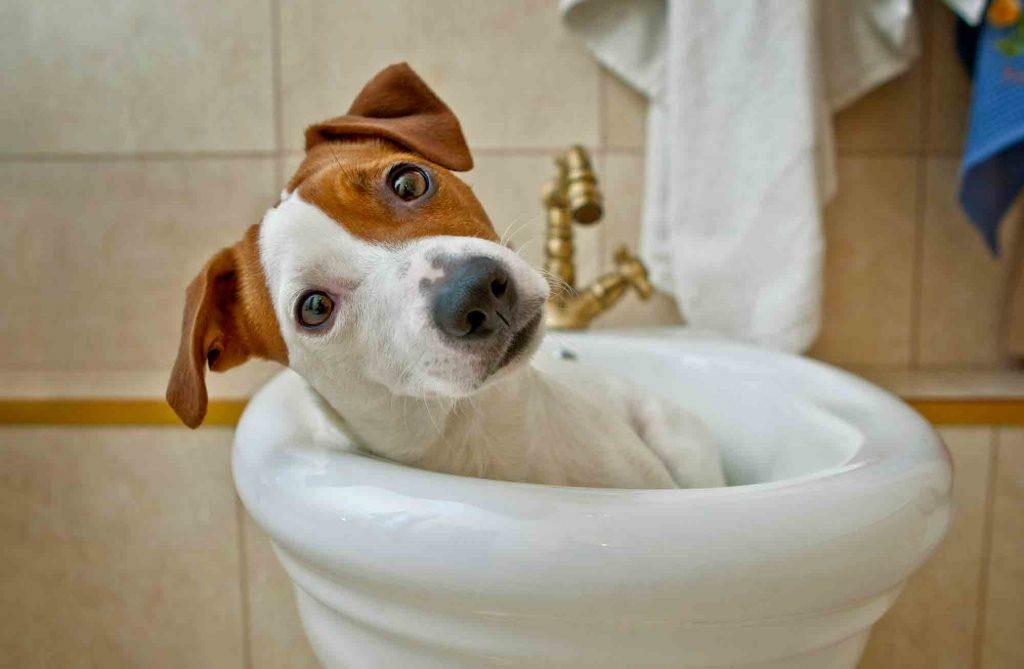An Significance of Proper Disposal of Animal Waste
An Significance of Proper Disposal of Animal Waste
Blog Article
We have stumbled on this article about 4 Reasons Why Dog Poop Cleanup is Important down the page on the web and reckoned it made sense to talk about it with you over here.

When it comes to disposing of waste, specifically animal waste, lots of people often resort to the hassle-free option of flushing it down the toilet. Nevertheless, this seemingly simple remedy can have serious repercussions for the environment and public health. In this post, we'll discover why flushing pet waste down the toilet is a poor idea and offer alternative methods for proper disposal.
Introduction
Appropriate waste disposal is vital for keeping ecological sustainability and public health. While it may appear harmless to purge animal waste down the toilet, it can cause numerous issues, both for the setting and human well-being.
Dangers of flushing pet waste
Ecological impact
Flushing animal waste presents unsafe microorganisms and virus into waterways, which can adversely affect water communities. These microorganisms can pollute water sources and harm aquatic life, disrupting fragile communities.
Public health worries
Pet waste has damaging microorganisms such as E. coli and Salmonella, which can present serious wellness risks to human beings. Purging animal waste down the commode can contaminate water materials, leading to the spread of conditions and infections.
Alternatives to flushing
Rather than flushing animal waste down the toilet, there are a number of alternate disposal approaches that are much more environmentally friendly and hygienic.
Composting
Composting animal waste is a green means to take care of it. By composting, organic matter is broken down right into nutrient-rich soil, which can be made use of to fertilize gardens and plants.
Garbage dump disposal
Getting rid of animal waste in a landfill is one more alternative. While not as environmentally friendly as composting, it is a safer option to flushing, as it protects against the contamination of water resources.
Family pet waste disposal systems
There are specific pet dog garbage disposal systems readily available that securely and hygienically deal with animal waste. These systems commonly use enzymes to break down waste and eliminate smells.
Actions to proper animal garbage disposal
To make sure appropriate disposal of animal waste, adhere to these actions:
Scooping and nabbing waste
Frequently scoop and bag pet waste making use of eco-friendly bags. This prevents waste from contaminating the atmosphere.
Utilizing marked waste bins
Dispose of bagged pet waste in designated waste bins, such as garden compost containers or landfill containers. Prevent flushing it down the toilet at all expenses.
Cleansing can and animal areas on a regular basis
Frequently clean litter boxes and pet dog locations to prevent the build-up of waste and germs. Usage pet-safe cleansing items to keep health.
Advantages of correct disposal approaches
Embracing correct disposal techniques for pet waste supplies numerous benefits:
Decreased environmental pollution
Correct disposal methods lower the risk of environmental pollution, shielding waterways and environments from contamination
Minimized threat of water contamination.
By avoiding flushing animal waste down the bathroom, the risk of water contamination is considerably minimized, safeguarding public health.
Boosted hygiene and health
Appropriate disposal approaches advertise much better hygiene and hygiene, producing a more secure atmosphere for both people and pets.
Final thought
In conclusion, flushing animal waste down the commode is harmful to the environment and public health. By taking on alternative disposal approaches and following proper waste monitoring practices, we can decrease the negative impact of animal waste and add to a cleaner, much healthier planet.
What To Do With Dog Poo – The Do's And Don'ts Of Disposing Of Faeces
Dog poo bins
Some councils provide dedicated dog waste bins in popular dog-walking areas that can take dog poo that has been bagged but you can legally dispose of dog waste in any public litter bin, as long as it is securely bagged. This also applies to your wheelie bin at home.
Do not flush
Water companies do not recommend flushing dog faeces down the toilet because certain parasites can survive the water processing treatment and are potentially harmful to humans. You should also never consider flushing dog poo that has been bagged down the toilet as the bags will not break down and instead create severe blockages in the sewage system.
In the woods
The Forestry Commission promotes a ‘stick and flick’ method for dealing with waste in the woods. This means finding a stick and using it to flick any poo from off the path so that it is out of the way of other walkers. You could also bury it as long as it is not in an area where there might be livestock.
Livestock
Parasites found in dog poo can be transmitted to livestock if they inadvertently eat infected faeces that has been left on grazing land. This could result in the death of sheep or abortion in cattle so you should always make sure you pick up your dog’s waste in fields where livestock could be present.

Frequently clean litter boxes and pet dog locations to prevent the build-up of waste and germs. Usage pet-safe cleansing items to keep health.
Advantages of correct disposal approaches
Embracing correct disposal techniques for pet waste supplies numerous benefits:
Decreased environmental pollution
Correct disposal methods lower the risk of environmental pollution, shielding waterways and environments from contamination
Minimized threat of water contamination.
By avoiding flushing animal waste down the bathroom, the risk of water contamination is considerably minimized, safeguarding public health.
Boosted hygiene and health
Appropriate disposal approaches advertise much better hygiene and hygiene, producing a more secure atmosphere for both people and pets.
Final thought
In conclusion, flushing animal waste down the commode is harmful to the environment and public health. By taking on alternative disposal approaches and following proper waste monitoring practices, we can decrease the negative impact of animal waste and add to a cleaner, much healthier planet.
What To Do With Dog Poo – The Do's And Don'ts Of Disposing Of Faeces
Dog poo bins
Some councils provide dedicated dog waste bins in popular dog-walking areas that can take dog poo that has been bagged but you can legally dispose of dog waste in any public litter bin, as long as it is securely bagged. This also applies to your wheelie bin at home.
Do not flush
Water companies do not recommend flushing dog faeces down the toilet because certain parasites can survive the water processing treatment and are potentially harmful to humans. You should also never consider flushing dog poo that has been bagged down the toilet as the bags will not break down and instead create severe blockages in the sewage system.
In the woods
The Forestry Commission promotes a ‘stick and flick’ method for dealing with waste in the woods. This means finding a stick and using it to flick any poo from off the path so that it is out of the way of other walkers. You could also bury it as long as it is not in an area where there might be livestock.
Livestock
Parasites found in dog poo can be transmitted to livestock if they inadvertently eat infected faeces that has been left on grazing land. This could result in the death of sheep or abortion in cattle so you should always make sure you pick up your dog’s waste in fields where livestock could be present.

I recently found that write up on Can You Flush Dog and Cat Poo Down the Toilet? when doing a search on the search engines. Loved our entry? Please share it. Help another person check it out. Thank you for your time. Revisit us soon.
Click Here Report this page